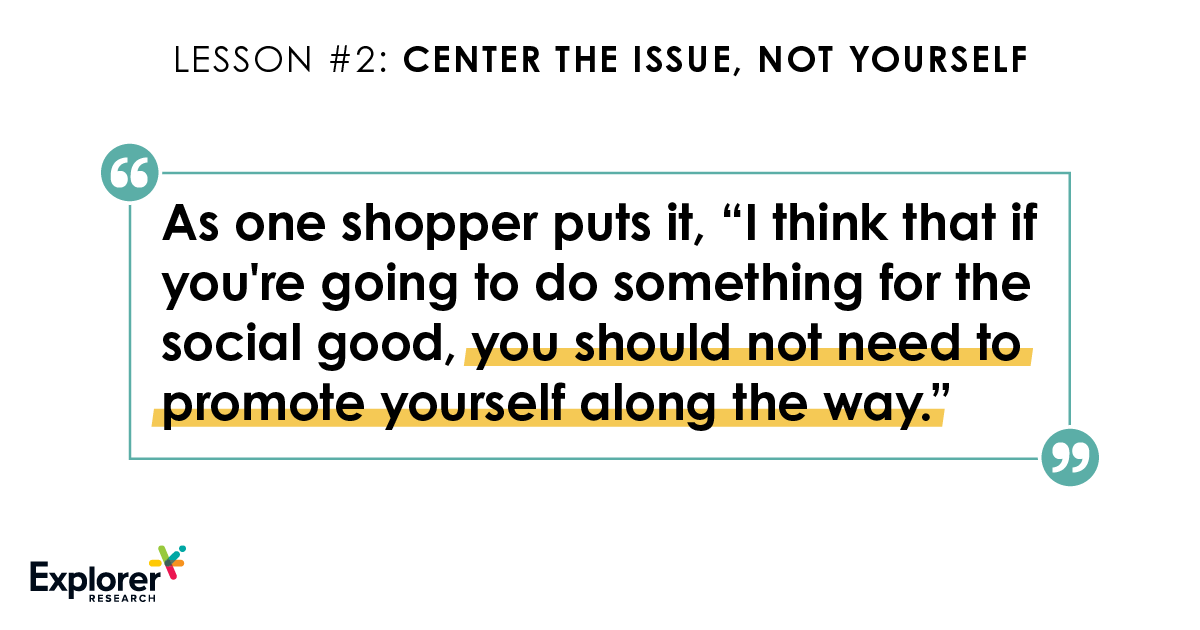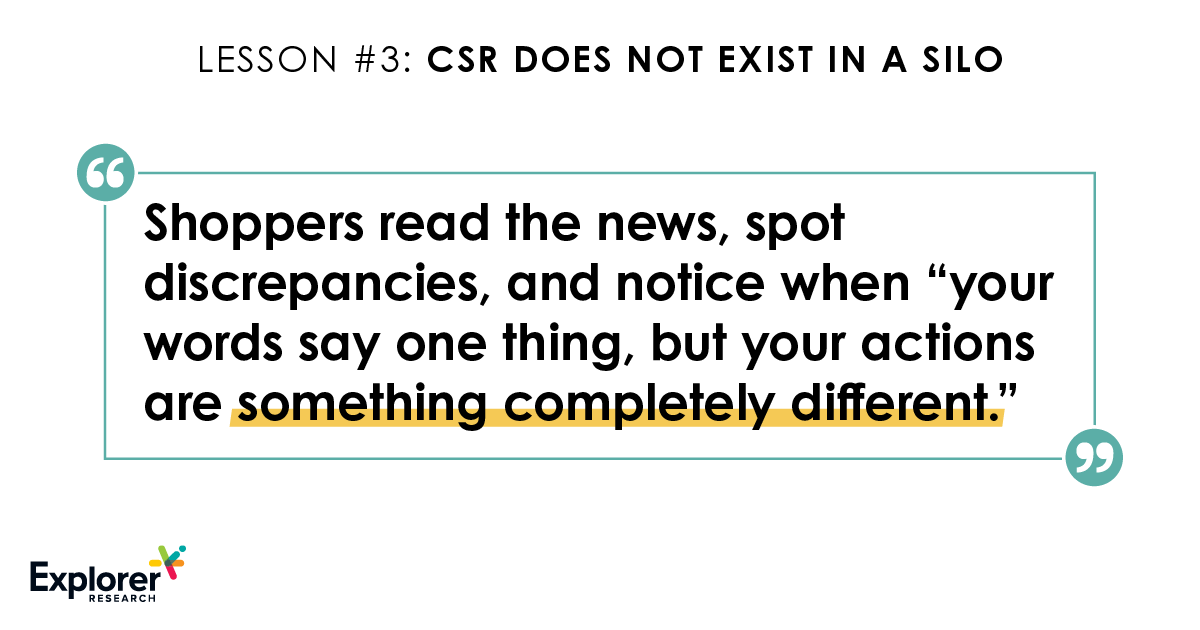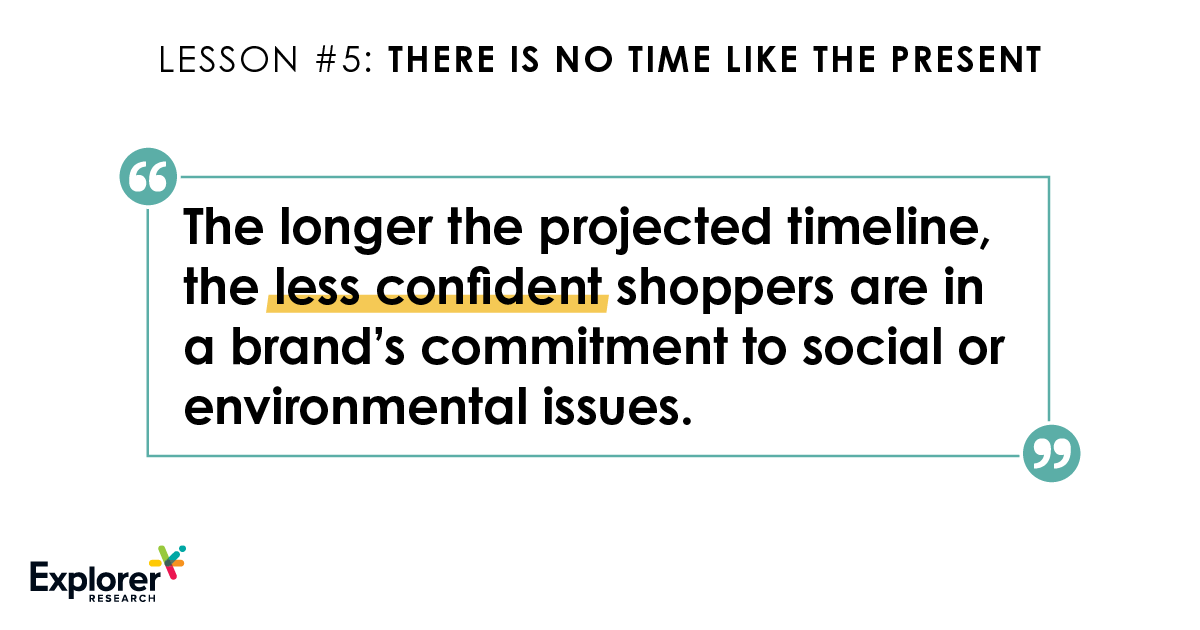Climate change. Deforestation. Food and water scarcity. Pollution. Gender and racial inequity . . . it’s no secret that we live in an unprecedented era of social and environmental turbulence. Our social media timelines are overflowing with news stories and images that remind us on a daily, if not hourly, basis that there is much work that could and should be done to ensure a better, brighter future for ourselves, our communities, and this beautiful blue planet we call home.
As market research experts, part of our role is acting as a bridge between consumers and businesses. We know without a doubt that businesses care about what matters to their customers. The hard part is knowing what questions to ask, especially in times when values are constantly shifting and competing for attention. This is why we place such high importance on our Learning Center and Blog, to provide a wealth of information on emerging technologies like virtual reality market research, and growing consumer concerns like sustainability.
To that end, we recently spoke to 10 consumers about corporate social responsibility: what it means, why it matters, and what role they feel brands and retailers ought to play to help improve some of today’s most pressing issues. First, let’s take a step back and find out more about corporate social responsibility and why it matters.
What is corporate social responsibility anyway?
Corporate social responsibility (CSR) refers to a business model in which for profit companies seek ways to create social and environmental benefits while pursuing organizational goals, like revenue growth and maximizing shareholder values.
From commitments to reducing CO2 emissions to implementing more sustainable packaging to promises of empowered workers and greener supply chains, companies big and small are engaged in the CSR arena more than ever. To be clear, this is not a new thing. However, a multitude of contemporary developments from the great resignation, to ocean fires, to wide-scale unionization pushes are pushing CSR to heightened importance in the mind of the consumer. But the benefits of CSR aren’t limited to consumer brand perception. Employee attraction and retention, accountability to investors, and ROI can all be positively impacted through these efforts.
We recently asked shoppers to review some CSR initiatives and share their thoughts and reactions about what’s working and what’s not. Their responses are the basis for 5 key lessons that brands and retailers might consider when adopting CSR initiatives now and into the future. Here’s what our shoppers had to say . . .
Lesson #1: Be specific
Of the shoppers we spoke to, many feel that the goals at the heart of many CSR initiatives are well-intended. Indeed, consumers want to feel like somebody, somewhere is stepping up to make positive change happen. But when we get into the nitty-gritty of websites and press materials, many can’t help but notice that a lot of CSRs lack substance and “feel vague.” Consumers we spoke to can spot the goal—“they want to go carbon neutral” and “it’s about less packaging in landfills”—but then comes the crucial question: “What are they actually going to do?”
In addition to naming a specific goal, the believability of CSR campaigns also hinge on whether brands and retailers are willing to think through and share concrete steps to make those goals a reality. Customers don’t just want to know where you’re going. They want to know how you’re getting there. Otherwise, “it’s all buzzwords.”

Lesson #2: Center the issue, not yourself
Of the campaigns that shoppers reviewed, some dedicate a considerable amount of word count toward self-promotion. For many, this is problematic and tantamount to “greenwashing” (aka, spending more money to say you’re doing something good for the environment instead of actually taking those steps). Shoppers notice when retailers and brands “lay it on thick” and “congratulate themselves” without showing any receipts. As one shopper puts it, “I think that if you’re going to do something for the social good, you should not need to promote yourself along the way.”
While CSR’s may be good for public relations, most feel it shouldn’t be the sole purpose of initiating such a campaign. Especially in cases where CSRs are run by multi-billion-dollar franchises, the optics are bad, “feel cringe-y” and some shoppers “don’t think [those kinds of brands] need any more than they have… To continue to plug itself and create a brand out of these issues is a problem.”
So, if your CSR is dominated by self-congratulatory statements, you’re doing it wrong. As one respondent puts it, “don’t think of these initiatives as, like, trying to attract more customers, but actually think about the impact that they have on the world.”

Lesson #3: CSR does not exist in a silo
There are “so many urgent issues” worth addressing, and most shoppers concede that an imperfect CSR is better than nothing at all. If your brand resides in one industry—say the ice cream industry—consumers are happy to learn about a pro-social campaign that has nothing to do with dairy. In this way, retailers and brands don’t necessarily have to “stay in their lane.” Genuineness is key in this endeavor, and sometimes the solution is communicating how the initiatives align with the business or employee values.
With that said, shoppers are not gullible. Some recognize CSRs can be leveraged to distract from issues that brands or retailers themselves create or exacerbate. As one respondent suggests, “it does feel like they are choosing an easier problem [to fix]…they are making a problem but solving a different one.” Relatedly, a few consumers we spoke to are also quick to point out that while working to go carbon neutral or supporting more equitable work conditions are objectively good goals to aspire for, it does not negate that some companies who engage in CSR work are also “spending millions of dollars union busting.” Touchy as the topic may be, it’s a worthwhile example that highlights how CSRs do not exist in a silo. Shoppers read the news, spot discrepancies, and notice when “your words say one thing, but your actions are something completely different.”
The recommendation here is neither easy nor straightforward. It certainly requires a considerable amount of soul-searching. But, at the end of the day, shoppers suggest they feel better supporting brands “that treat their workers well” and have more respect for those CSRs that recognize how a company creates less than ideal conditions while actively working toward improving those conditions. Relatedly, they notice when a brand’s CSR endeavors spill over to their social media channels too.

Lesson #4: Use your imagination
Some shoppers feel that CSR initiatives “sound the same” and may be suffering from “a lack of imagination.” They can’t understand why. After all, consumers know that brands and retailers are teeming with qualified, creative, and talented professionals. As one respondent suggests, “I think there’s a lot of human potential…[but] a lot of old ways of thinking.” Most consumers we spoke to are looking to industry to think outside of the box. Consumers know that “the amount of resources that [companies] would be able to provide is much more than [individuals] can” and want brands and retailers to “reimagine ways of making money” that are better than the status quo.
Lesson #5: There is no time like the present
As we review CSR examples in our in-depth interviews, consumers linger on projected timelines for when corporations will act: “2035?!” It goes without saying, the longer the projected timeline, the less confident shoppers are in a brand’s commitment to social or environmental issues. Again, much of this concern can be addressed through the transparency of communication.
There’s nothing inherently wrong with lofty 15-year plans, but the consumers know these plans don’t come to fruition in one fell swoop. Communicating the steps and phases of long-term initiatives can help illustrate to consumers that the company has done the legwork and has intention behind the public-facing statement.
At the end of the day, corporate social responsibility is not for the faint of heart. Done right, it means envisioning new ways of doing business, which costs money, time, and energy. Indeed, many consumers suggest that they have internalized a sincere desire to do more at the individual-level but feel that they are not always in a financial position to do so. Most of the shoppers we spoke to want the brands and retailers they shop from to internalize these desires too, along with the overwhelming sense of urgency that comes with it. When asked what demands they would make if brands and retailers were listening, overwhelmingly the answers are: “try harder” and “do it faster.”


